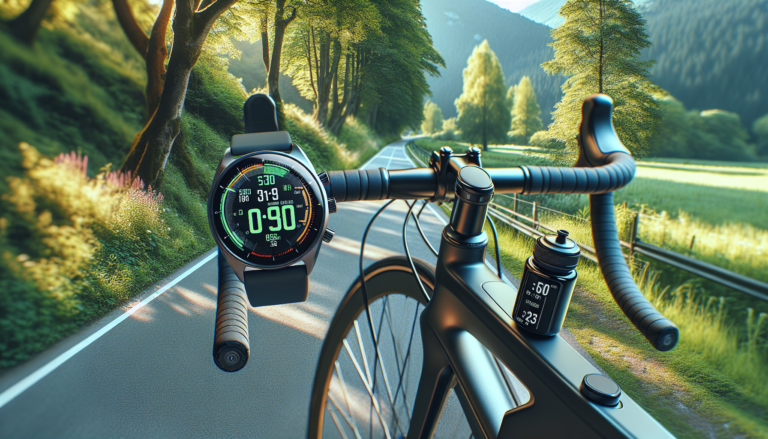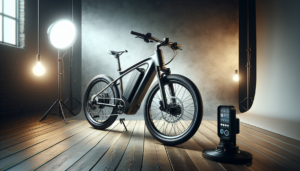How Long Does It Take to Bike 10 Miles?
The time it takes to bike 10 miles varies depending on several factors, including the cyclist’s fitness level, the type of bike they are using, and the terrain. On average, it takes recreational cyclists between 45 and 70 minutes to complete a 10-mile ride. However, more experienced and competitive cyclists can cover the same distance in a much shorter time.
Average Time for Recreational Cyclists
For the average person who bikes for leisure or commuting, completing a 10-mile ride in about an hour is a reasonable expectation. Recreational cyclists typically maintain a speed of 12 to 15 miles per hour, which translates to a 40 to 50-minute ride for 10 miles. However, this time can be slightly longer if the route includes hills or other challenging terrain.
| Cyclist Type | Average Speed (mph) | Time to Bike 10 Miles |
|---|---|---|
| Recreational | 12-15 | 40-50 minutes |
Average Time for Competitive Cyclists
Competitive cyclists and those who train regularly can maintain much higher speeds and complete a 10-mile ride in a significantly shorter time. Professional cyclists, such as those who compete in the Tour de France, can average speeds of 25 to 28 miles per hour, allowing them to cover 10 miles in under 25 minutes. Even amateur competitive cyclists can often maintain speeds around 20 miles per hour, completing a 10-mile ride in about 30 minutes.
| Cyclist Type | Average Speed (mph) | Time to Bike 10 Miles |
|---|---|---|
| Professional | 25-28 | 21-24 minutes |
| Amateur Competitive | 20 | 30 minutes |
Factors Affecting Biking Speed
While the average times provide a general idea of how long it takes to bike 10 miles, several factors can significantly impact a cyclist’s speed and, consequently, their completion time. Some of the most influential factors include:
- Fitness level and training
- Type of bike
- Terrain and elevation
- Weather conditions
Fitness Level and Training
A cyclist’s fitness level plays a crucial role in determining their speed and endurance. Those who engage in regular cycling training and maintain good overall fitness will typically be able to ride faster and longer than those who are less active. As cyclists improve their fitness through consistent training, they can expect to see improvements in their average speed and 10-mile completion time.
Type of Bike
The type of bike a cyclist uses can also affect their speed. Road bikes, with their lightweight frames, thin tires, and aerodynamic design, are built for speed and efficiency on paved surfaces. On the other hand, hybrid bikes, which combine features of road and mountain bikes, may be more comfortable for casual riders but are generally slower than dedicated road bikes.
Terrain and Elevation
The terrain and elevation of the cycling route can significantly impact a rider’s speed. Flat, smooth roads allow for faster speeds and more consistent pedaling, while hills and rough terrain can slow cyclists down and require more effort to maintain momentum. When estimating how long it will take to bike 10 miles, it’s essential to consider the elevation changes and road conditions along the route.
Weather Conditions
Weather conditions, such as wind, rain, and extreme temperatures, can also affect cycling speed. Strong headwinds can make pedaling more difficult and reduce speed, while tailwinds can provide a helpful boost. Rain can create slick road conditions and reduce visibility, causing cyclists to slow down for safety reasons. Extreme heat or cold can also impact a cyclist’s performance and comfort level, potentially slowing them down.
Safety Considerations for Biking
While striving to improve speed and 10-mile completion time, it’s crucial for cyclists to prioritize safety. Some essential safety considerations include:
Essential Safety Gear
Wearing a properly fitted helmet is non-negotiable for cycling safety. Helmets can significantly reduce the risk of head injuries in the event of a crash. Additionally, wearing bright or reflective clothing can help increase a cyclist’s visibility to drivers, particularly in low-light conditions.
When cycling on roads shared with motor vehicles, it’s essential to be aware of traffic and follow the rules of the road. Cyclists should ride in the same direction as traffic, use hand signals when turning, and be prepared to navigate around obstacles. Whenever possible, cyclists should use designated bike lanes or paths to minimize their exposure to vehicle traffic.
Nutrition and Hydration Tips
Proper nutrition and hydration are essential for sustaining energy levels and optimizing performance during longer rides, such as a 10-mile journey.
Pre-Ride Nutrition
Before embarking on a ride, cyclists should aim to consume a balanced meal containing complex carbohydrates and lean protein. This combination will provide sustained energy and support muscle recovery. Examples include oatmeal with fruit and nuts, a whole-grain sandwich with turkey, or a smoothie made with banana, spinach, and Greek yogurt.
Hydration Strategies
Staying hydrated is crucial for maintaining performance and avoiding fatigue during a ride. Cyclists should drink water regularly, aiming for 16-24 ounces per hour of cycling. For rides lasting longer than an hour, cyclists may benefit from using a sports drink containing electrolytes to replace those lost through sweat.
Tips to Improve Your Biking Time
For cyclists looking to improve their 10-mile completion time, there are several strategies they can employ:
Setting Realistic Goals
Setting achievable goals is key to making steady progress. Start by establishing a baseline 10-mile time, and then set incremental goals for improvement. A 5-10% increase in speed per month is a realistic target for most cyclists. Be sure to track your progress and celebrate your achievements along the way.
Incorporating Interval Training
Interval training, which involves alternating between high-intensity efforts and recovery periods, can help cyclists improve their speed and endurance. Incorporate speed workouts, such as hill repeats or tempo rides, into your training plan to challenge your body and stimulate adaptations.
Engaging with the Cycling Community
Joining a local cycling club or participating in group rides can provide motivation, accountability, and opportunities to learn from more experienced riders. Surrounding yourself with a supportive cycling community can help you stay committed to your goals and make the journey more enjoyable.
By understanding the factors that affect cycling speed, prioritizing safety, and implementing effective training strategies, cyclists can work towards improving their 10-mile completion time while enjoying the many benefits of this rewarding sport.






